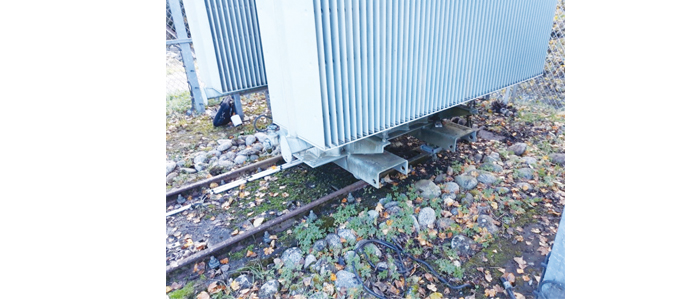- +61 7 3374 2877
- Email Us
An innovative system to retrofit a fire protection solution to existing bunds that have traditionally been filled with yard stone. The stone typically covers the upper bund wall area and works by cooling down the burning oil that is spilled in the event of a catastrophic failure. The Akhelec MX system replaces this method and provides natural extinguishing of the flames without any risk of the fire re-igniting.
The patented fire extinguishing system comprises of factory-assembled 1.5-mm galvanised sheet metal fire extinguishing baffle plates.
There is a copper or stainless-steel terminal grounding system that accompanies the 5-mm thick galvanised frame.
Galvanised grating covers the baffle plates to allow for maintenance of the whole structure and to allow staff to move around.
Traditional yard stone bed laid on a grating
This solution has been used throughout Australia for decades. There are many transformers which are still protected by this method however, this solution is generally not used in renovation or new construction projects.
A typical installation is illustrated which shows yard stone being placed on top of a pit. A grating is installed below to allow for water (and any oil) to drain through to the sump.
The bund is over designed to accommodate the stone and the actual retention volume of the bund is defined as what is available under the grating. The consequence is that a larger footprint is required when constructing a new bund and in the case of renovation or upgrades, the available oil volume is often too small to consider upgrade to a larger transformer.

Maintenance:
The stones must be removed, cleaned, and replaced at regular intervals. The absence of long-term maintenance makes the system totally inoperative (dust and soil particles clump in the gaps between the stones and prevent the dielectric from penetrating into the pit). The risk of fire propagation is high if maintenance operations are not carried out.
It is necessary to regularly inspect the condition of the pit. Inspections involve the operator clearing an area of stone each time, and this can introduce a risk of possible fracturing of the stone once it is placed back. As this maintenance operation is not easy, there is a risk that the pit will not be inspected in the long term.
Safety:
Maintainers moving around and walking directly on these stones creates a significant risk of ankle and knee injuries (sprains, strains, etc.). To minimise this risk, a second grating can be placed above the rock bed to allow safe movement of personnel.
As the bottom grating is covered with rock, it is therefore not visible. The operators are not aware of the state of corrosion of the grating plus the supporting structure and there is a risk of structural collapse with potentially serious accidents.
Testing and validation:
The stone bed has been used for more than 50 years and not much literature exists to prove the effectiveness of this system in extinguishing an electric fire. An effective system can only be achieved if the bund is regularly maintained.